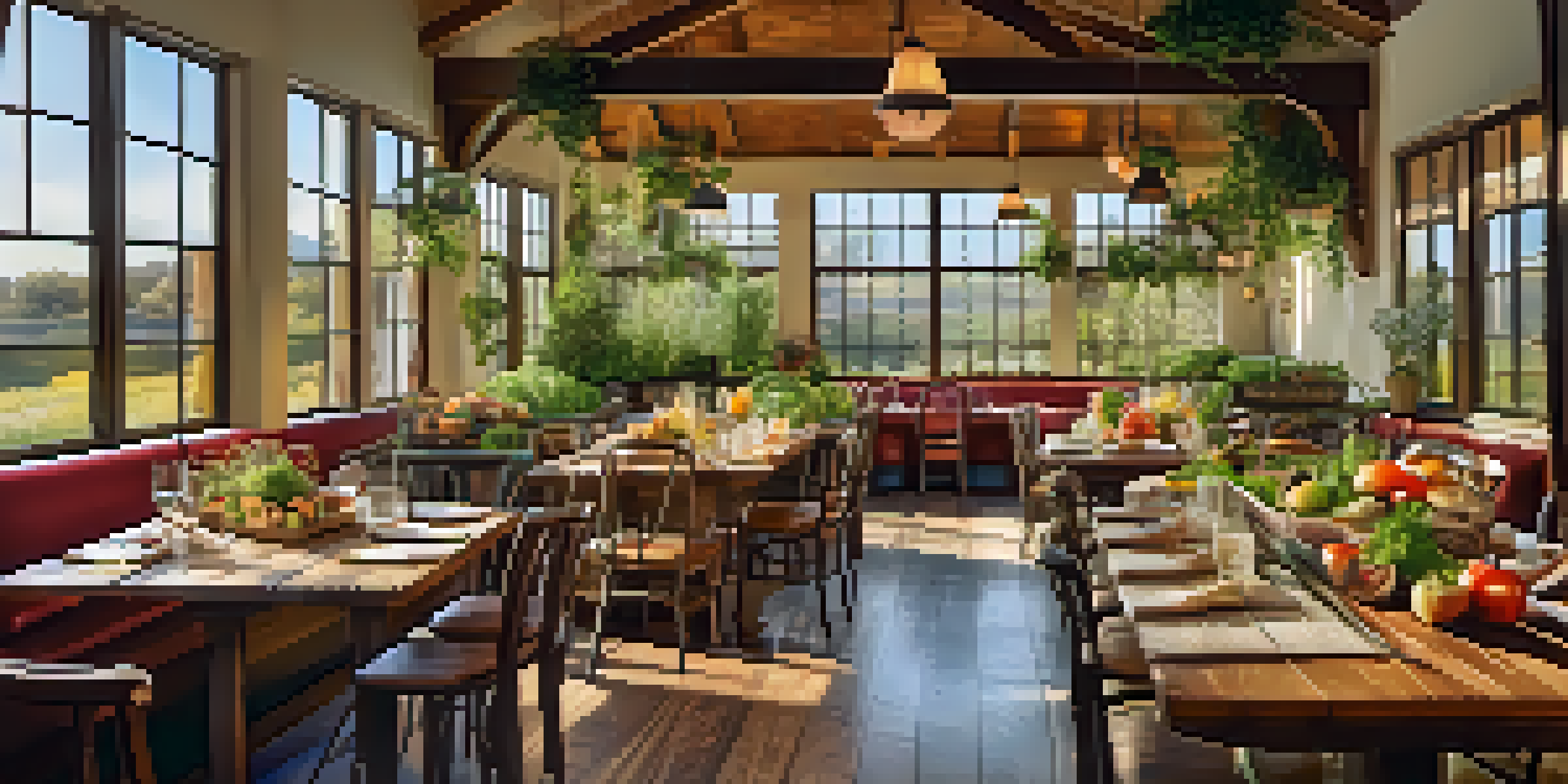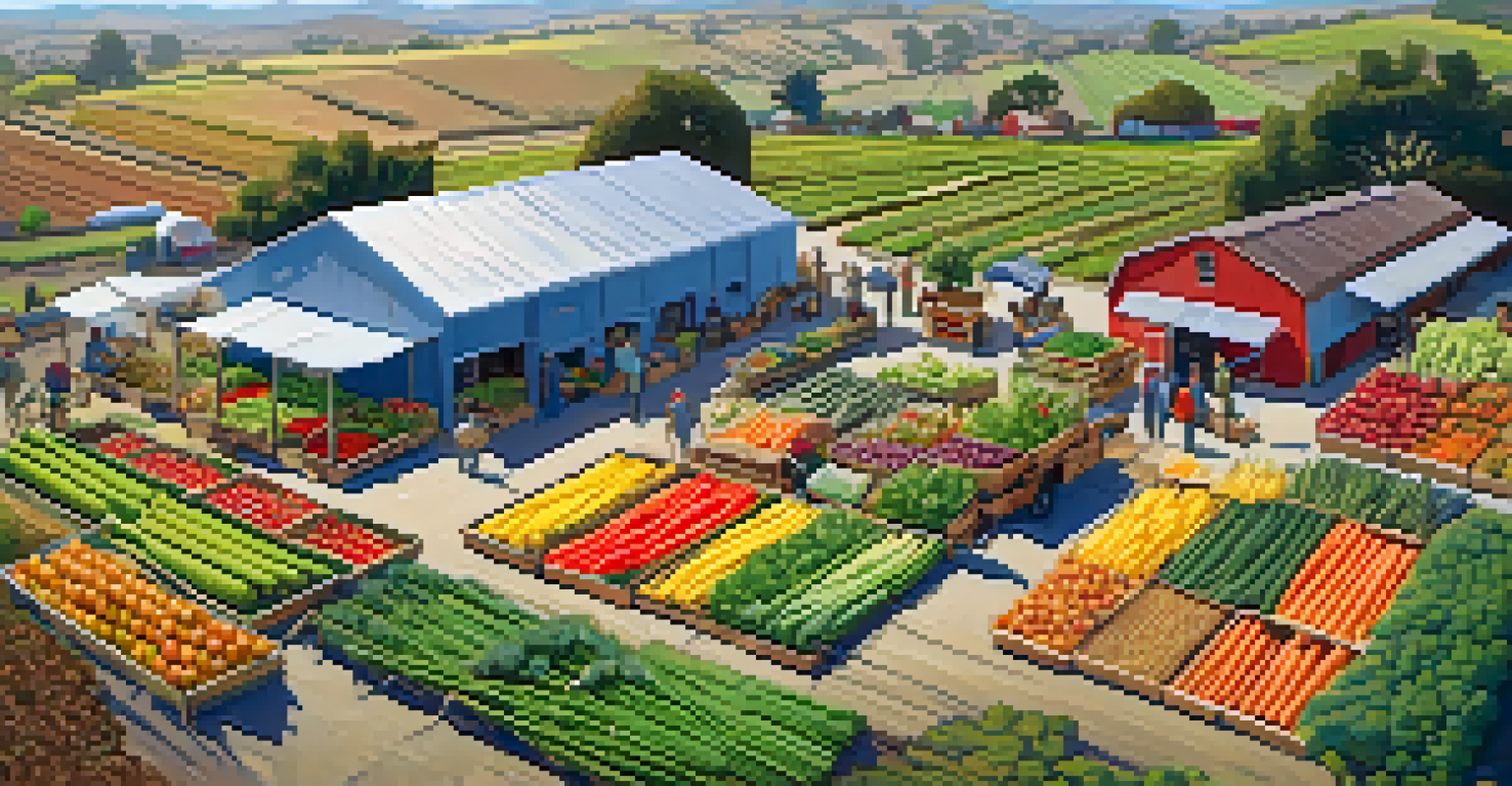Farm-to-Table Dining: Sustainable Eating in San Diego

Understanding Farm-to-Table: What It Means
Farm-to-table dining emphasizes sourcing food directly from local farms, ensuring freshness and quality. This approach not only supports local agriculture but also reduces the carbon footprint associated with transporting food over long distances. When you choose farm-to-table, you’re not just eating; you’re participating in a movement towards sustainability.
Eating locally is not just a trend; it's a way of life that connects us to our community and the earth.
In San Diego, the farm-to-table philosophy has gained significant traction, aligning perfectly with the region's rich agricultural landscape. From fresh vegetables to artisanal cheeses, local restaurants are committed to showcasing the best of what the area has to offer. It’s about knowing where your food comes from and the story behind it.
This dining trend also encourages seasonal eating, which means that menus change throughout the year to reflect the freshest ingredients available. Eating seasonally not only enhances flavor but also supports biodiversity as it encourages a variety of crops to be grown.
The Benefits of Choosing Local Ingredients
Choosing local ingredients has numerous benefits, starting with freshness. When produce is picked at its peak ripeness and delivered quickly to restaurants, the difference in flavor is often remarkable. Imagine biting into a tomato that was picked just hours earlier compared to one that’s been shipped across the country.

Additionally, local sourcing helps to stimulate the local economy. When restaurants purchase from nearby farms, they contribute to the livelihoods of farmers and their families, creating a robust community. This cycle of support fosters resilience in the local economy and encourages sustainable practices.
Farm-to-Table Enhances Freshness
Sourcing food directly from local farms ensures peak freshness and supports sustainable practices.
Moreover, many local farms adopt environmentally friendly practices, which means that by dining at farm-to-table establishments, you are indirectly supporting eco-conscious farming methods. This can lead to healthier soil, cleaner water, and a more sustainable ecosystem overall.
Spotlight on San Diego’s Local Farms
San Diego is home to a variety of farms that produce everything from organic vegetables to grass-fed meats. Places like Suzie's Farm and Coastal Roots Farm are shining examples of how local agriculture thrives in the region. These farms not only grow food but also educate the community about sustainable practices.
To eat is a necessity, but to eat intelligently is an art.
Many of these farms offer tours and workshops, allowing visitors to see firsthand how their food is grown. This connection between the consumer and the producer fosters a deeper understanding and appreciation for what goes into our meals. It’s a unique opportunity to learn about the importance of sustainable farming.
Furthermore, some of these local farms partner with restaurants, ensuring that their fresh produce makes it directly to your plate. This collaboration strengthens the community and emphasizes the importance of supporting local agriculture.
Exploring San Diego’s Farm-to-Table Restaurants
San Diego boasts a vibrant farm-to-table dining scene, with restaurants that prioritize local sourcing. Places like The Cottage in La Jolla and Juniper & Ivy in Little Italy exemplify this trend, offering menus that change with the seasons. Each dish tells a story of local farms and fresh ingredients, making dining an experience.
These restaurants often feature partnerships with local farmers, showcasing the best of what San Diego has to offer. Diners can enjoy meals that are not only delicious but also reflect the region's culinary diversity. It’s a chance to explore flavors that are unique to Southern California.
Local Farms Strengthen Community
Partnerships between restaurants and local farms bolster the local economy and foster community resilience.
Additionally, many of these establishments are committed to sustainability beyond just sourcing. They implement practices such as composting, minimizing waste, and using eco-friendly materials, making your dining experience more environmentally responsible.
The Role of Community Supported Agriculture (CSA)
Community Supported Agriculture (CSA) programs allow consumers to buy seasonal produce directly from local farmers. By purchasing a share, you receive a box of fresh fruits and vegetables weekly, ensuring that you’re always eating in season. This not only supports local agriculture but also encourages a connection between consumers and farmers.
In San Diego, numerous CSAs offer diverse options, catering to different dietary preferences and needs. This model helps reduce food waste since participants receive what is in season, promoting creativity in meal planning. It’s a fun way to experiment with new ingredients and recipes.
Moreover, CSAs often include educational materials about the food you’re receiving, helping you learn how to prepare and enjoy them. This educational aspect fosters a greater appreciation for the food you consume, reinforcing the farm-to-table ethos of knowing your food better.
Sustainability Practices in Farm-to-Table Dining
Sustainability in farm-to-table dining goes beyond sourcing local ingredients. Many restaurants are implementing practices like reducing food waste, composting, and using sustainable seafood. These efforts contribute to a more responsible dining experience and encourage diners to think about their own impact on the environment.
For instance, some establishments have begun to offer 'nose-to-tail' dining, where every part of the animal is used to minimize waste. This practice not only enhances creativity in the kitchen but also aligns with the principles of sustainability. It encourages diners to appreciate the food they consume on a deeper level.
Sustainability Drives Dining Choices
Farm-to-table dining promotes eco-friendly practices, encouraging diners to make environmentally responsible choices.
Additionally, restaurants are increasingly focusing on energy-efficient practices, such as using solar power or energy-saving appliances. These initiatives further solidify their commitment to sustainability, making it easier for customers to enjoy meals that are good for both their palates and the planet.
The Future of Farm-to-Table in San Diego
The future of farm-to-table dining in San Diego looks promising, with a growing awareness of the importance of sustainable eating. As more people recognize the benefits of local sourcing, the demand for farm-to-table dining will likely continue to rise. This shift in consumer behavior is encouraging more restaurants to adopt these practices.
Moreover, as climate change impacts agriculture, local farms are adapting their practices to ensure resilience. This adaptability is crucial for sustaining the local food system and ensuring that future generations can enjoy the flavors of San Diego. The community is rallying around these efforts, fostering a culture of sustainability.

Ultimately, the farm-to-table movement in San Diego is not just a trend; it’s a lifestyle choice that encourages healthier eating habits, supports local economies, and promotes environmental stewardship. As diners, we have the power to choose where our food comes from, making a difference one meal at a time.